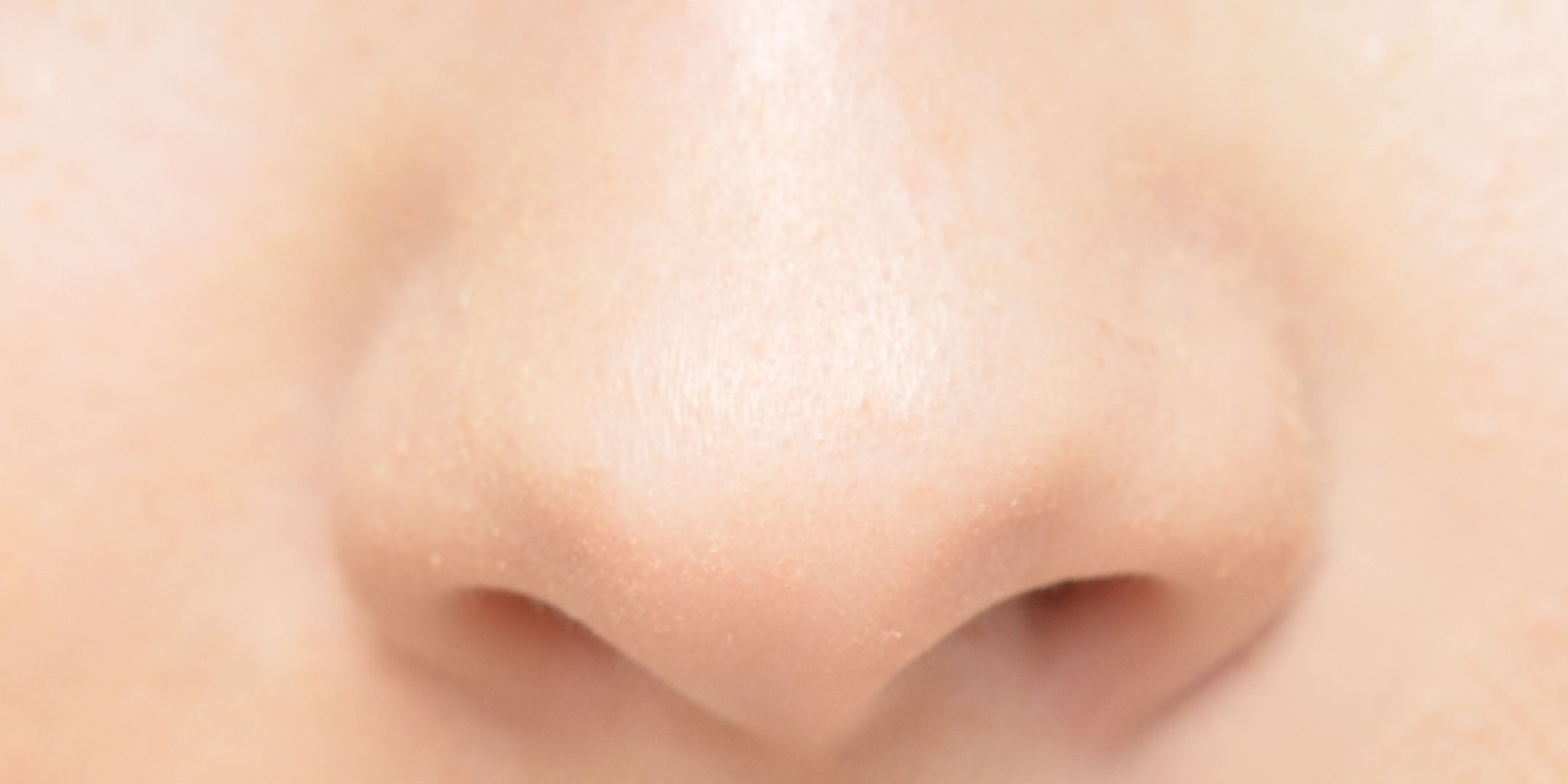The nose, an important organ in your facial architecture, adds value to your facial aesthetics.
Located like a pyramid, primarily made up of bones and cartilaginous tissues, it is prone to hits or injuries.
A “broken nose” is a common term referring to a break or crack in the nasal structures, and clinically, it is termed “fractured nose” or “nasal fracture.”
To preserve the form and function, immediate and suitable care and attention are essential.
Broken Nose: A Snapshot
A “broken nose” means cracks, fissures, or breakages in the nasal structures. It could be a single isolated fracture or sometimes multiple fractures, also termed “comminuted fractures.”
Treating a single isolated nasal fracture differs from treating a comminuted or crushed fracture involving many bones.
Generally, these are caused by external factors. Specifically, it is the bone over the bridge of the nose that bears the maximum brunt.
Causes
You may break your nasal structure due to various causes. However, the most common causes are sports injuries, mishaps, altercations, trip and fall accidents, and motor vehicle accidents.
Broken Nose: Can You Fix It By Yourself?
For any confirmed or suspected fracture, it is recommended that you undergo a clinical assessment by a competent medical staff. Nose fractures require evaluation by a certified otolaryngologist. This may be followed by a cosmetic surgeon’s assessment depending on the case.
However, until you are physically examined and assessed, you can minimize the symptoms by adopting a few steps outlined below. This will prevent further deterioration in the intervening time.
As a first step, once you suspect or have confirmed that you have broken your nose, first-aid is critical.
Do-It-Yourself
A quick DIY is to hold the nose bridge with your index finger and thumb of one hand and gently push the nose tip upwards with your other hand. Pull the upper lip downwards and release it. Repeat this a couple of times and relax.
First Aid
You may experience acute pain and swelling in the first few hours post-injury. Following the below steps can help you to deal with the situation.
Avoid Panicking: Nasal fractures are the most common facial fractures. Almost all types can be addressed by restoring shape and function. So do not get hyper-anxious.
Avoid Upright Positions: Blood entering the throat should be prevented. This can be achieved by bending forward and staying in that position.
Wound Wrapping: Cover up with sterile clothing for visible wounds.
Avoid Nose Blowing: Do not overexert the nose by blowing air too hard.
Ice Packs: Ice packs at regular intervals should be applied at the problem area until you meet the physician. If you are uncomfortable doing it, seek others’ help. Remember, the symptom of pain and swelling can subside and spring up back. Hence, do not pause the ice application.
Analgesics: Take pain medications such as Advil or Aleve, or any other OTC pain reliever that works for you well. This is to reduce edema and discomfort.
Medical Consultation: Reach out to the nearest emergency medicine doctor you can access. If involved in an MVA, call 911.
Risks Involved In Avoiding Treatment
No intervention would be recommended if there are no marked internal deformities, and if you are unmoved by aesthetic impacts from injury.
In cases where it is suggested, despite clinical advice, if you shy away from getting your broken nose treated:
• It could result in permanent aesthetic problems. Down the line, you may require cosmetic surgeries and reduction procedures.
• It can also result in respiratory problems due to unseen obstructed nasal passage or collapse of the nasal tunnel.
• If you are wearing spectacles for vision improvement, that could be impacted by the deformed nasal shape.
Broken Nose: Are The Damages Permanent Or Temporary?
Your broken nose could heal by itself or with medical support. Irrespective of this, the deformity due to the injury can remain permanent or temporary, depending on the mechanism of the injury. It also depends on the direction in which the force hits your nose.
In cases of nasal bone fractures without displacement, long-term problems are less. There are cases when patients do not want an open rhinoplasty as long as the nose is functioning well. In those patients, the damage, though permanent, would not impact how the nose works.
If the internal and external valves of the nose or the septum get damaged, the nasal airway could be blocked. Such damages from injuries can be addressed only by rhinoplasty surgeons. If untreated, they remain permanent.
Broken Nose: Signs, Symptoms, And Risk Factors
Some broken nose issues show up externally, while some may not. Here are some signs and symptoms that needs immediate attention.
Signs And Symptoms
In case of a facial or nasal injury, the indications listed below should not be ignored:
Swelling: Spread all over the nose and the adjoining areas of the nose.
Pain: Mild or acute, dispersed all over the nose or in specific nasal regions.
Bone Mobility: A detectable mobility of a single or more nasal bones.
Deformity: A notable change in the shape of the nose. It could be visible to the naked eye or felt subtly.
Bleeding: Medically called epistaxis, bleeding in drips or flow, from either nostril is an emergent condition to be neglected.
Respiratory Difficulty: If breathing through the nose is complex and warrants mouth breathing.
Nasal Discharge: Watery or mucus discharge from the nose.
Nasal Blockage: A feeling of either of the passages being blocked.
Paresthesias: Abnormal skin sensation like tingling, itching, or burning, or in some rare cases, absence of sensation.
Risk Factors
The severity and extent of damage could pose many risk factors.
Hematoma: If blood accumulates underneath the nasal septum layer, this blood pooling is called a hematoma. It presents only as pain or swelling. If this is not drained out, it could lead to septal abscess or pus, cartilage necrosis, or a deformity of the nasal saddle.
Even after aspiration, monitoring of the patient is necessary. This is to ensure no further blood is collecting in the septum. Such scenarios may need operating theater intervention.
CSF Leak: A subtle head injury could also mimic nasal fracture symptoms. If clear fluid discharge happens, it could be due to a CSF leak. To confirm it, beta-2 transferrin or beta-trace protein tests are done, and if necessary, a high-resolution CT.
Cartilage Damage: If the cartilage is damaged, it can cause blood collection inside the nose. This can cause permanent deformity, the collapse of the nose, and even death.
Broken Nose: Fixing Old Injuries
If the patient does not have any accompanying diseases that restrict surgery and if the nose has healed evenly, old injuries can be fixed.
Restoring the nose bones to the normal position up to two weeks after injury would be feasible. After two weeks, the bones can freeze and get set in the wrong position.
To fix this, minimally invasive techniques have to be adopted. After that, it depends on how correctly or wrongly the injury has healed.
Within this time, severe fractures can also be repaired with no incision. A corrective rhinoplasty will be needed to mend the broken nose.
For correcting traumatic deformities through formal septorhinoplasty, waiting for 3 to 6 months after the first injury is recommended. This is because edema would have reduced, and the post-traumatic inflammatory condition would have resolved.
How Can I Straighten My Nose Bone At Home, Without Surgery?
You can, but it is a risk. If your nose is broken,do first aid and then consult your otolaryngologist. Some people may have a crooked nose (One of the 12 common nose shapes) naturally and are looking for some cosmetic procedures or DIY nose reshaping possibilities.
Straightening Of Crooked Nose Shapes
Nose straightening can be done only in a clinical setting by experienced cosmetic surgeons or otolaryngologists.
The nasal septum is the ridge that separates the nasal cavity into the right side and left side. Due to congenital disabilities or injuries or several other reasons, this septum may get a bent shape from left to right or vice versa.
A nose with such a shape is termed a “crooked nose.” In simple terms, a crooked nose may take a “C” shape or “S” shape or “/” or “\” shape.
For aesthetic improvement, rhinoplasty would be effective. For shaping the wall between the nasal passages, septoplasty is performed.
A crooked nose present since birth, or congenitally, will stay the same way unless surgically modified. But as long as it is functionally not impairing, your surgeon will not advise you to undergo surgery.
Does A Broken Nose Stay Crooked?
Not really. If the septum has a breakage, it could be internally corrected with or without surgery. Only in cases where the velocity of hit bends the bridge of the nose, the nose acquires a crooked shape. Nonetheless, it could be restored to normal shape through non-surgical rhinoplasty.
Broken Nose Reset: Nose Fracture Reduction
Simple fractures of the broken nose are left to heal by themselves. But if there occurs a broken nose and nose fracture, your cosmetologist may fix your broken nose using a nose fracture reduction procedure.
In this procedure, outside wounds are prepped, and any foreign bodies present are removed. Tiny lacerations are closed with fine sutures. Minor cuts are covered with porous surgical tape strips or skin glue.
Procedure Description
Medications: General anesthesia is not required for all cases.
Topical Decongestants: Oxymetazoline and lidocaine with phenylephrine spray.
Equipment: Headlight, nasal speculum, elevator, forceps, external splint, blade, osteotome, and a mallet.
Medical Team: For local and topical anesthesia cases, it comprises only the surgeon or emergency medicine physician and, in some cases, a circulating nurse.
For general anesthesia cases, a circulating nurse, surgical technician, and anesthesia provider would be needed in addition to the surgeon.
For Closed Reduction: A force is applied opposite in direction to the vector of trauma. This will help achieve reduction. Depressed segments are reduced using the elevator.
If the clinical evaluation is missed within ten days to 14 days of injury, the bones could get set in an incorrect position. In such cases, osteotomies may be required.
For Open Reduction: Wider exposure of the organs and direct visualization is the advantage of an open procedure. If closed reduction is not possible, open septorhinoplasty would be required. These are cases where the injuries are complex and warrant wide manipulation, grafting, osteotomy, and suturing to optimize breathing and aesthetic issues.
Postoperative Instructions
After the procedure, the patient should:
• Wear a splint until subsequent follow-up, usually one to two weeks after reduction.
• Refrain from contact sports or games involving flying objects like tennis, saucer, baseball, etc., for a few weeks.
• Sleep with the head elevated.
• Avoid nose-blowing
• Avoid strenuous exercises.
Summary
Your natural bone healing depends on the extent of injury, the time elapsed after the trauma, your bone health, overall well-being, age, and other concomitant illnesses. A broken bone heals in the position it is set.
Therefore, for fixing a broken nose, proper positioning is crucial. Expert care from otolaryngologists should be sought for an appropriate setting of bone.









